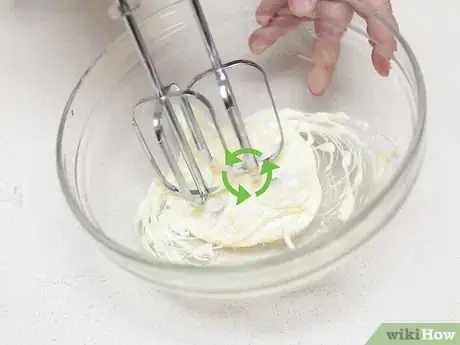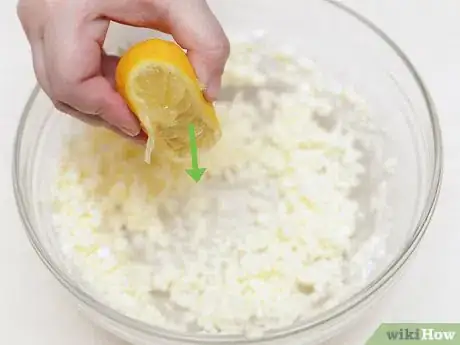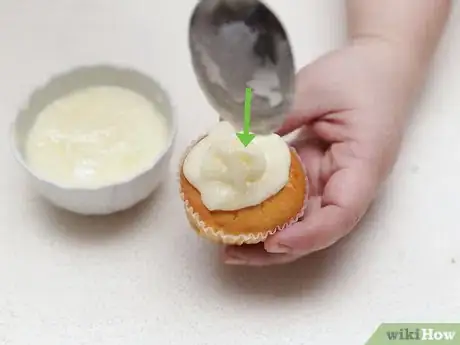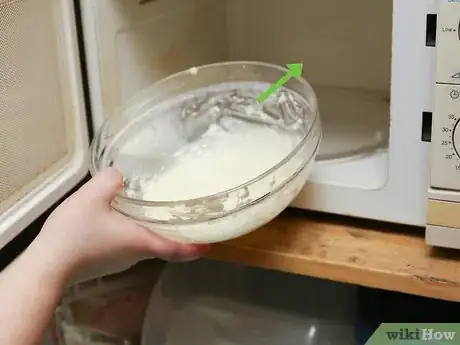This article was co-authored by wikiHow Staff. Our trained team of editors and researchers validate articles for accuracy and comprehensiveness. wikiHow's Content Management Team carefully monitors the work from our editorial staff to ensure that each article is backed by trusted research and meets our high quality standards.
This article has been viewed 72,690 times.
Learn more...
Lemon icing is tangy and sweet, and perfect for cakes, scones, cupcakes, and other types of pastries. It pairs well with flavors such as lemon, blueberry, or lavender. You can make a thick, frosting-like icing, perfect for spreading onto cakes or swirling onto the top of cupcakes. You can also make a thinner glaze-like icing instead, perfect for drizzling over loaves and scones.
Ingredients
- ½ cup (115 grams) butter
- 2 tablespoons (30 milliliters) lemon juice
- 1 teaspoon (5 grams) lemon zest (optional)
- ½ teaspoon (2.5 milliliters) vanilla extract (optional)
- 3 cups (375 grams) icing/confectioners' sugar
- Yellow food coloring (optional)
- 2 tablespoons (30 grams) butter or margarine
- ½ teaspoon (2.5 grams) lemon zest (optional)
- 1 cup (125 grams) icing/confectioner's sugar
- 1 tablespoon (15 milliliters) lemon juice
Steps
Making Lemon Frosting
-
1Cream the butter until it turns light and fluffy. Put the butter into a mixing bowl, and beat it with a handheld mixer. If you have a food processor with a whisk attachment, use that instead.
-
2Mix in the lemon juice, vanilla extract, and lemon zest. If you'd like a smoother frosting, omit the lemon zest. If you'd like a less sweet frosting, omit the vanilla extract.Advertisement
-
3Beat in the sugar gradually, 1 cup (125 grams) at a time. Use medium speed, and keep beating until the mixture becomes smooth. From time to time, scrape the sides of the bowl so that everything mixes evenly.[2]
-
4Add more sugar or lemon juice, if necessary. If the frosting is too dry, add a little more lemon juice or milk. If the frosting is too wet/runny, add a little more sugar. At this point, you can also add a few drops of yellow food coloring to make your frosting more lemon-colored.
-
5Use the frosting on cakes, cupcakes, or as a filling in pastries. If you won't be using the icing for a while, keep it covered with a damp cloth in the fridge, and re-whip it before you spread it.[3] If it is too dry, then add a little more lemon juice or milk.
-
6Enjoy the frosting!
Making Lemon Glaze
-
1Add the ingredients into a glass, heat-safe bowl. You can add the lemon zest for a little extra texture, or omit it entirely. You will be heating the ingredients in a microwave.
-
2Put the bowl into a microwave, and heat for 45 seconds or until the butter is melted.[4] Depending on the strength of your microwave, you may need a little more/less cooking time. Keep an eye on the butter.
-
3Take the bowl out and mix the ingredients with a whisk. Keep mixing until there are no lumps or clumps. You want everything to be smooth.
-
4Let the mixture cool for a few minutes. During this time, it will thicken. It will ooze over your pastries, as opposed to sinking into it. If the mixture is too thin, then mix in a little more sugar.
-
5Pour the mixture over your cake or pastry. It is perfect for scones, buns, cakes, and loaves, especially lemon or lavender-flavored ones!
Community Q&A
-
QuestionDo I use salted or unsalted butter?
 Community AnswerUse unsalted butter. You can always add a bit of salt if you think it needs it.
Community AnswerUse unsalted butter. You can always add a bit of salt if you think it needs it.
Things You'll Need
Lemon Frosting[6]
- Hand-held mixer or food processor with a whisk attachment
- Spatula for spreading
Lemon Glaze
- Heat-safe, glass bowl
- Whisk
References
- ↑ http://allrecipes.com/recipe/7770/lemon-icing/
- ↑ http://www.wilton.com/lemon-buttercream-icing/WLRECIP-187.html
- ↑ http://www.wilton.com/lemon-buttercream-icing/WLRECIP-187.html
- ↑ http://www.thekitchenmagpie.com/how-to-make-a-lemon-icing-glaze/
- ↑ http://www.thekitchenmagpie.com/how-to-make-a-lemon-icing-glaze/
- ↑ http://allrecipes.com/recipe/7770/lemon-icing/





























































